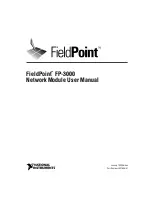
LE_ARP_REQUEST—Contains the broadcast MAC address 0xFFFFFFFF. This packet is sent on a
control direct VCC to the LES to query for the ATM address of the BUS.
•
LE_ARP_RESPONSE—Sent in response to an LE_ARP_REQUEST; it contains the ATM address of
the BUS.
•
LE_JOIN_RESPONSE—Contains the LANE client identifier (LECID) that is a unique identifier for
each client. This ID is used to filter return broadcasts from the BUS.
•
LE_JOIN_REQUEST—Allows the LEC to register its own MAC and ATM addresses with the LES as
well as any other MAC addresses for which it is proxying. This information is maintained to make
sure that no two LECs will register the same MAC or ATM address.
•
Joining and Registering with the LES
After a LEC joins the LES, the LEC uses its own ATM and MAC addresses. The following process shows
how this is done:
After the LEC obtains the LES address, the LEC clears the connection to the LECS to set up a
control−direct VCC to the LES. It then sends an LE_JOIN_REQUEST on that VCC.
1.
When the LES receives the LE_JOIN_REQUEST, the LES checks with the LECS with its open
connection, verifies the request, and confirms the client’s membership.
2.
If this verification is successful, the LES adds the LEC as a branch in its ATM point−to−multipoint
control−distribute VCC.
3.
The LES issues the LEC a successful LE_JOIN_RESPONSE that contains a unique LECID.
4.
Note The LECID is used by the LEC to filter its own broadcasts from the BUS.
When this process is complete, LANE will have created an ATM forwarding path for unicast traffic between
the LECs. This forwarding path will enable you to move data across the ATM network.
LANE Configuration Guidelines
When setting up LANE components, you should consider the following list:
The LANE subsystem supports as many as 16 LECS addresses.
•
The LECS must always be assigned to the major interface.
•
Two separate ELANs cannot be configured on the same subinterface.
•
LES/BUSs for different ELANs cannot be configured on the same subinterface.
•
Each ELAN can define an unlimited number of LES/BUSs.
•
LECSs come up as masters automatically until a higher−level LECS takes priority.
•
If multiple LES/BUS pairs are configured for an ELAN, the priority of a pair is determined by the
order in which it was entered in the LECS database. When a higher−priority LES/BUS pair comes
online, it takes over the functions of the current LES/BUS on the ELAN.
•
It may take up to one minute for changes made to the list of LECS addresses to propagate through the
network. However, changes made to the configuration database for LES/BUS addresses take place
almost immediately.
•
The ATM Forum−defined well−known LECS address is used if no LECS is operational on an ELAN.
•
Note
The operating LECSs must use the same configuration database. An identical database can be
created by configuring a LECS database on one device and then copying the database to other
devices by using the config net command.
How LANE Works
Earlier, I discussed how the different LANE components interact with each other to support the LAN
emulation services. A LEC goes through three stages to join an ELAN:
Initialization and configuration
•
Joining and registering with the LES
•
Finding and joining the BUS
•
174
Summary of Contents for Catalyst 1900 Series
Page 1: ......
















































